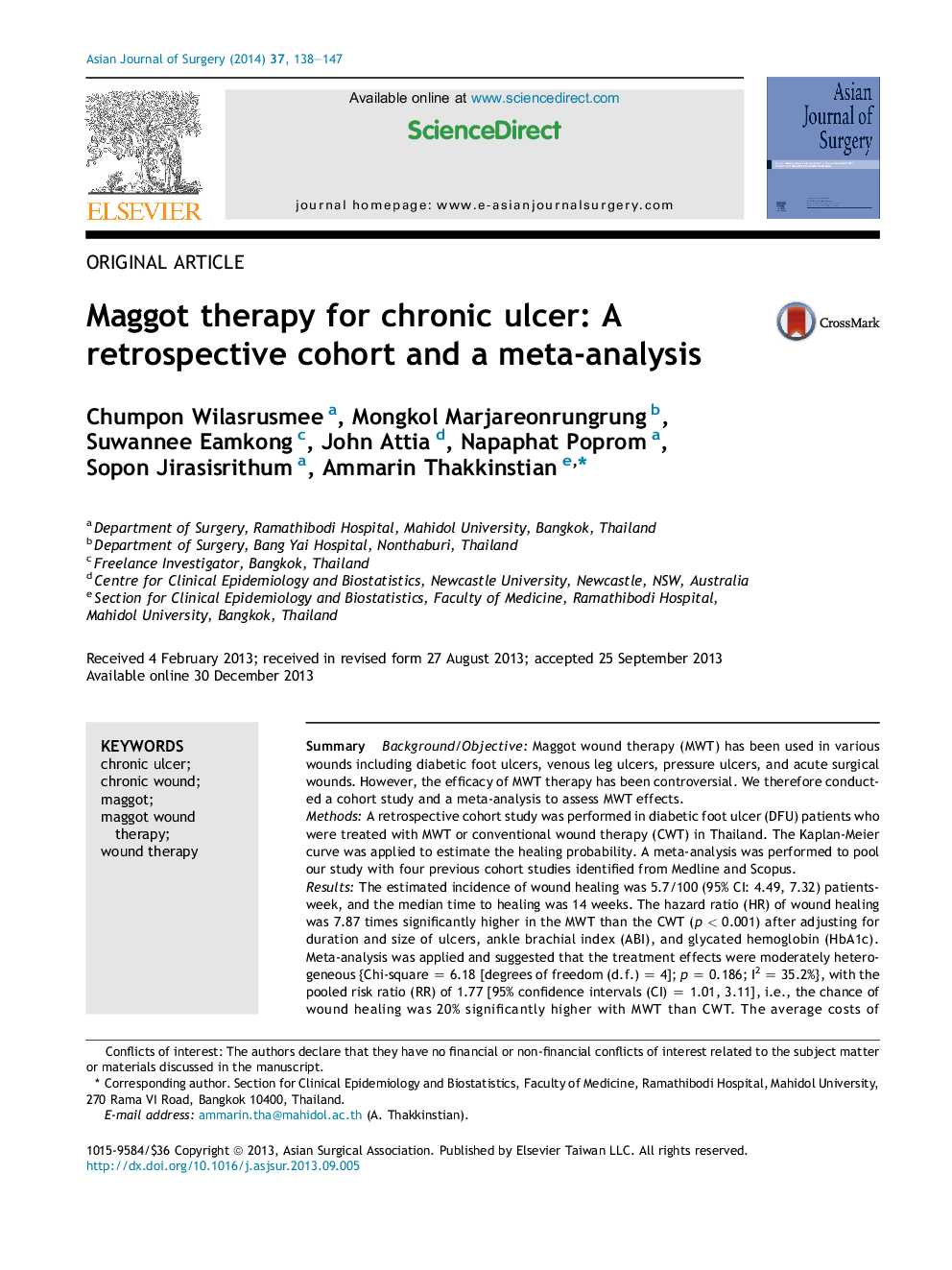| Article ID | Journal | Published Year | Pages | File Type |
|---|---|---|---|---|
| 4282854 | Asian Journal of Surgery | 2014 | 10 Pages |
SummaryBackground/ObjectiveMaggot wound therapy (MWT) has been used in various wounds including diabetic foot ulcers, venous leg ulcers, pressure ulcers, and acute surgical wounds. However, the efficacy of MWT therapy has been controversial. We therefore conducted a cohort study and a meta-analysis to assess MWT effects.MethodsA retrospective cohort study was performed in diabetic foot ulcer (DFU) patients who were treated with MWT or conventional wound therapy (CWT) in Thailand. The Kaplan-Meier curve was applied to estimate the healing probability. A meta-analysis was performed to pool our study with four previous cohort studies identified from Medline and Scopus.ResultsThe estimated incidence of wound healing was 5.7/100 (95% CI: 4.49, 7.32) patients-week, and the median time to healing was 14 weeks. The hazard ratio (HR) of wound healing was 7.87 times significantly higher in the MWT than the CWT (p < 0.001) after adjusting for duration and size of ulcers, ankle brachial index (ABI), and glycated hemoglobin (HbA1c). Meta-analysis was applied and suggested that the treatment effects were moderately heterogeneous {Chi-square = 6.18 [degrees of freedom (d.f.) = 4]; p = 0.186; I2 = 35.2%}, with the pooled risk ratio (RR) of 1.77 [95% confidence intervals (CI) = 1.01, 3.11], i.e., the chance of wound healing was 20% significantly higher with MWT than CWT. The average costs of treatment in patients with DFU were lower in the MWT group than in the CWT group, with medians of US$292.82 and US$490, respectively.ConclusionOur evidence suggests that MWT is significantly better for wound healing and more cost-effective than CWT. An updated meta-analysis or large scale randomized controlled trial (RCT) is required to confirm this effect.
